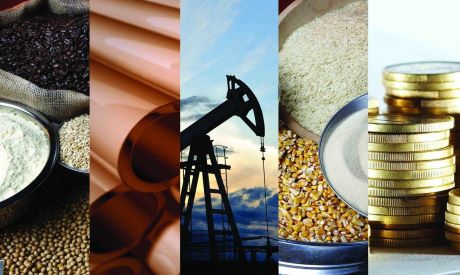Focus pivots from OPEC+ to tight refining capacity – higher energy inflation is coming
Global commodities
With global oil demand continuing to break record levels, a lack of spare crude processing capacity due to a near-decade of ESG-induced underinvestment (see here and here), is resulting in higher refinery crude runs. This is stretching the global refining system, supporting margins and breeding fuel price volatility. What alarms us most is that is that today’s near 10 month high crude oil prices may be projecting a false sense of security when it comes to energy inflation, which matters for monetary policy. Put differently, oil refiners buy crude, but the real economy is exposed to refined petroleum products (like gasoline, diesel and jet fuel). Typically price of crude and refined products are in sync but we are not in normal times and the correlation has broken down. This signals that energy inflation is set to become far stronger than likely priced in by markets. The distress has been reinforced this week at the APPEC conference wherein executives from Gunvor Group to Vitol voiced their apprehensions that the refining system is crying out for fresh investment with oil demand still rising. As we have continuously catalogued, the old carbon economy still needs investment until the green transition is complete, otherwise the global economy risks hitting capacity constraints on growth (see here). Absent the next round of investment which will be far more disorderly and prolong given ESG investing (fairly) influences future capex plans, the limited stocks and marginal excess capacity signals that the only solution is to lower demand. For that, however, a recession is necessary.
Energy
After the longest winning run in more than four years following announced extension in production cuts from Saudi Arabia and Russia, the front-end of the crude is taking a breather with oil steadying ~USD90/b (see here). Brent’s 14 day relative strength index (RSI) has been thrusted well into overbought territory (above 70) and a moderate pause in the rally reinforces our conviction of Brent remaining in the USD80s/b handle for the remainder of this year (see here). Meanwhile, European natural gas (TTF) prices have fallen over 12% this week with delayed strike action at Australian LNG facilities raising hopes that parties could come to a deal.
Base metals
In an environment of broad China macro pessimism, the past week has witnessed the first collective set of increments to provide some basis for improvement on the activity path ahead. Whilst it may be too early to verify that Chinese manufacturing is stabilising, we take comfort in the stronger-than-expected manufacturing PMI data for August, where the China Caixin index rose to its higher level since February this year. This has provided a firmer tone to China risk, and base metals price action.
Precious metals
Gold has steadied in recent trading days after dropping the most in more than a month as the US dollar and Treasury yields have jumped on bets US rates will stay higher for longer. We reiterate the message that a recent survey of money managers signalled that they are positive on gold prices in 2024, even though risks to a stronger US dollar and even higher US rates linger (see here).
Bulk commodities
Iron ore is teetering close to its highest level since April 2023 after Vale – the world’s second largest iron ore producer – said the outlook for China’s steel-intensive property sector was looking “more encouraging”. We however continue to caution that micro conditions offer prospects of a softening turn with the surplus trajectory expected in the remaining months of 2023 signalling downside price risks (see here).
Agriculture
Sugar prices have climbed to the highest in more than a decade after the world’s largest trader of the commodity, Alvean, forecasts another year of shortages, which would mark the sixth consecutive year of supply shortfalls. This is on the back of concerns that extreme weather will likely keep India, the second largest producer, from exporting at historical levels, driving down global stockpiles even further.
Core indicators
Price performance and forecasts, flows, market positioning, timespreads, futures, inventories, storage and products performance are covered in the report.



